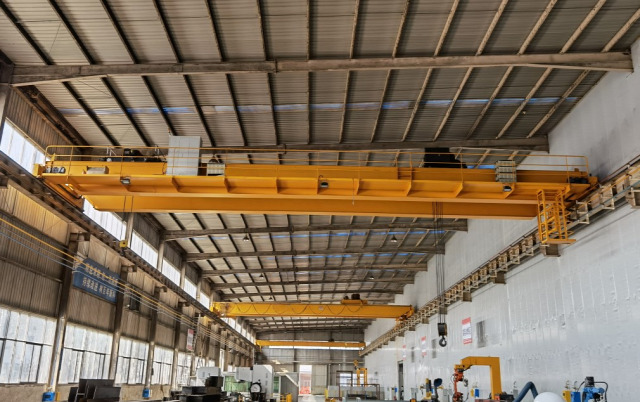Operating a 20 ton overhead crane requires skill, knowledge, and attention to safety. These powerful machines are designed to handle heavy loads in industrial settings, such as manufacturing plants, construction sites, and warehouses. If you are new to operating a 20 ton overhead crane, it's essential to understand the proper procedures to ensure safe and efficient operation. In this article, we will provide a step-by-step guide on how to operate a 20 ton overhead crane effectively.

Step 1: Familiarize Yourself with the Crane
Before operating the crane, take the time to familiarize yourself with its components and functions. Understand the different parts of the crane, including the bridge, trolley, hoist, and controls. Read the operator's manual provided by the manufacturer to gain a comprehensive understanding of the specific features and safety precautions of the overhead crane 20 ton you are operating.
Step 2: Perform Pre-Operational Checks
Before each use, perform a thorough inspection of the crane to ensure it is in proper working condition. Check for any signs of damage, loose bolts, or worn-out parts. Inspect the hoist ropes or chains, hooks, and safety devices. Verify that the emergency stop button is functioning correctly. If any issues are identified, do not proceed with the operation and report the problems to the appropriate personnel.
Step 3: Ensure Proper Load Capacity
Determine the weight of the load you are about to lift and ensure it is within the crane's load capacity. The load capacity should be clearly indicated on the crane. Avoid overloading the crane, as it can compromise the safety of the operation and lead to equipment failure.
Step 4: Clear the Work Area
Ensure the work area is clear of any obstacles, personnel, or equipment that could interfere with the crane's movement or pose a safety risk. Establish clear communication methods with ground personnel to ensure everyone is aware of the crane's operation.
Step 5: Position the Crane
Position the crane in a suitable location that provides optimal visibility and maneuverability. Ensure that the crane is on a stable and level surface. Engage any necessary safety mechanisms, such as outriggers or stabilizers, if required.
Step 6: Start the Crane
Activate the power supply to the double beam overhead crane and ensure that all control switches are in the neutral position before starting the operation. Verify that the emergency stop button is accessible and functional.
Step 7: Test the Controls
Before lifting any loads, test the crane's controls to ensure they are functioning correctly. Familiarize yourself with the control panel and the functions of each button or lever. Practice moving the crane in different directions and observe how it responds to your commands.
Step 8: Lift and Move the Load
Once the pre-operational checks are complete, and you are comfortable with the controls, you can begin lifting and moving the load. Use the controls to operate the bridge and position the crane over the load. Lower the hoist until the lifting device (hook, grab, magnet, etc.) is directly above the load. Engage the hoist to lift the load smoothly and steadily. Use caution and maintain proper balance during the lifting process.
Step 9: Maneuver the Crane
While lifting the load, use the controls to maneuver the crane carefully. Move the crane in the desired direction, ensuring that the load remains stable and balanced. Avoid sudden movements and jerks, as they can cause the load to swing or become unstable.
Step 10: Monitor the Operation
Continuously monitor the operation throughout the lifting and moving process. Keep a close eye on the load, the crane, and the surrounding area for any signs of potential issues or hazards. Maintain clear communication with ground personnel and follow any signals or instructions provided.
Step 11: Lower the Load and Shut Down
Once the load has reached its intended destination, lower it gently and steadily to the ground. Ensure that the load is securely placed before releasing tension on the hoist. Once the load is safely positioned, shut down the crane by turning off the power supply and returning all controls to the neutral position.
Operating a 20 ton overhead crane requires proper training, knowledge, and a commitment to safety. By following this step-by-step guide, you can effectively and safely operate a 20 ton overhead crane, ensuring the successful lifting and moving of heavy loads in industrial environments. Always refer to the manufacturer's guidelines and consult with experienced operators when in doubt.

